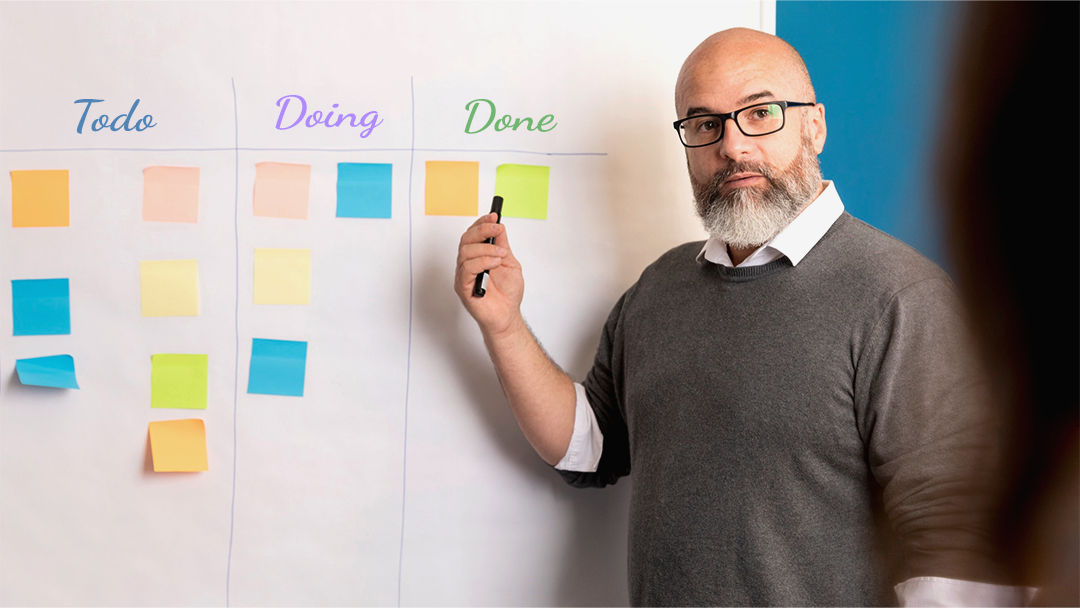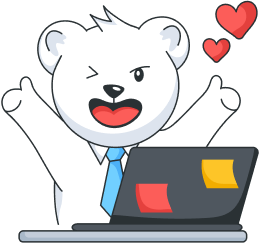In today’s fast-moving world of project management, staying organized is no longer optional—it’s essential. If you’ve ever struggled with keeping tasks on track or aligning your team, a Kanban board could be the missing piece.
But what exactly is a Kanban board, and how can tools like Taskity.ai make it even more effective? Let’s dive in.
What Is a Kanban Board
A Kanban board is basically a way to see your work instead of just listing it. The word “Kanban” comes from Japanese—it means something like “signal” or “card.” Makes sense, because the whole system runs on cards you move around.
Picture a whiteboard with columns. Maybe three of them: To Do, In Progress, Done. Every task is a little card. When you start the work, the card moves across the board until it lands in “Done.” That’s it. Super simple.
The cool part? You don’t have to dig through emails or ask, “Hey, what’s the status?” You just look at the board, and the answer’s right there.
Why Use a Kanban Board?
Honestly, Kanban boards stick around because they work. Simple as that.
1. You can see it all - One look at the board and you know what’s waiting, what’s being worked on, and what’s already done. No digging through emails. No guessing.
2. Less multitasking, more finishing - Look, Kanban isn’t about juggling ten things at once. You just pick one task, get it done, and slide the card over. It’s basically the same feeling as crossing something off a to-do list—only a bit more visual. It’s cleaner, and you actually get stuff done.
3. It bends, it doesn’t break - Running a dev sprint? Planning a marketing launch? Just trying to keep up with chores at home? The board flexes to whatever you’re doing.
4. Everyone sees the same thing - No hidden updates. No “oh, I didn’t know.” The whole team is looking at the same board, so collaboration feels natural.
Key Components of a Kanban Board
Understanding the basic elements of a Kanban board is essential if you want to use it effectively as a visual workflow tool for project management.
- The board’s split into columns — To Do, In Progress, Done — basically like stops on a journey. You can glance at it and know exactly where each task’s at.
- Each task is on its own card, like a sticky note. You can note down who’s doing it, when it’s due, or any small details so nothing gets forgotten
- Some boards also have rows called swimlanes, which separate work by project, team, or type. This keeps things clear and organized when there’s a lot going on. It's a lifesaver for keeping things clear when stuff starts piling up.
- And then there are WIP limits (“work in progress” limits). They’re just a polite way of saying, “Let’s not overload this stage.” Fewer tasks at once means better focus and less chaos.
How to Use a Kanban Board: Step by Step
1.Identify Your Workflow
Start by writing out the steps you actually go through. If it’s only you, keep it simple with three lists: To Do, In Progress and Done. Working with a team? Drop in extra stops like Review or QA so the board fits your real process.
2.Create Tasks as Cards
Turn each task into its own card. Add the basics — who’s responsible, deadlines, and any notes. This makes the board a clear, practical tool you can actually act on.
3.Set Work-in-Progress Limits
Put a cap on how many tasks sit in one column at once. When you cut down the pile-ups, people stop juggling too much and can actually finish things faster.
4.Move Cards Across Columns
As things get done, move the cards from one column to the next. This quick visual shift lets you see exactly where every task stands.
5.Regularly Review the Board
Look over the board every day or once a week. You’ll see hold-ups sooner, watch progress as it happens and reshuffle priorities before they become problems. Keeping it updated turns a Kanban board into a steady tool for any busy or growing team.
Different Types of Kanban Boards
Physical boards :
Think old-school: a whiteboard with sticky notes. You can grab a marker, move notes around and everyone in the room sees changes instantly. It’s simple, cheap and great for a small group sitting together.
Digital boards :
Now picture Trello, Taskity.ai or Jira. Everything’s online, so you can drag cards from your laptop or phone. Most of these apps also bake in things like file sharing, reminders, basic automation and reports.
If your team is scattered across locations or the company’s bigger, the digital route usually wins. If you’re a tight team in one office, a physical board still feels faster and more personal.
Benefits of Using a Kanban Board :
- Enhanced Visibility – Instead of waiting for someone’s email, you can simply glance at the board and instantly see who’s doing what and how far it’s got. It feels more like looking over someone’s shoulder than reading a report.
- Better Prioritization – You’re free to drag cards up or down whenever things change so the important stuff stays on top. It’s a quick, hands-on way of keeping priorities straight rather than a rigid system.
- Increased Accountability – Every card actually names who’s doing it, so when you look you know exactly whose plate it’s on instead of guessing.
- Continuous Improvement – When a column starts filling up, you spot the slowdown quickly and can talk it through before it becomes a big issue..
- Scalability – The same board works for a freelancer, a small team or a whole company — you just add more columns and cards as you grow.
Common Mistakes to Avoid
- One is adding too many columns. As you keep slicing the work into more stages, the board gets crowded and confusing, and before long nobody even looks at it.
- Another is ignoring WIP limits. At first it seems fine to let cards pile up, but pretty quickly the team is drowning in unfinished work and everything slows down.
- A third mistake is not updating the board often enough. If cards just sit there without being moved or changed, the board stops matching reality and people stop trusting it.
- And finally, skipping reviews. If you don’t look over the board regularly, tiny snags in the workflow slip by and end up snowballing into bigger issues
Tips for Beginners
- Start simple – When setting up your board, keep it minimal. Three to five columns are usually enough in the beginning. Adding too many at once can make things messy and harder to follow.
- Make colors work for you – Don’t treat colors as just decoration. Use them to highlight priorities, deadlines, or task categories. That way, the most important details stand out at a glance.
- Make updates a team habit – Encourage everyone to move their own cards and keep the board current. When everyone participates, it stays useful and organized.
- Stay flexible- Change columns or rules as your process changes; the board should grow with you, not lock you in.
- Go digital for remote work – If your team’s spread out, try an online board so everyone can see and update it in real time.
Why Kanban Is Ideal for Beginners
A Kanban board is one of the easiest ways to manage projects. What makes it helpful is that it’s:
- Visual – You can see the work instead of digging through reports.
- Flexible – Easy to adapt for different teams or workflows.
- Simple – No complicated setup, no long learning curve—just start and go.
- Practical – Focuses on real progress and helps teams get work done efficiently.
If you’ve never tried a project management tool before, Kanban is an easy way to keep tasks organized and make work feel less stressful.
Conclusion
Kanban boards are easy to use and effective. They give you a quick overview of tasks—what’s underway, pending, or completed. No digging through files or emails.
For small teams or startups, it’s a lifesaver. A few columns and cards show you what’s important and what’s coming up. As your work grows, the board just grows with it.
It’s not fancy. It just works, helps people stay on track, and makes teamwork easier.
FAQS
Q1. What is a Kanban board used for in project management?
A Kanban board is a visual tool that helps teams organize tasks, track progress, and manage workflows. It’s commonly used in project management to improve visibility, reduce bottlenecks, and increase productivity.
Q2. Is Kanban good for beginners?
Yes! Kanban is one of the simplest project management methods for beginners. With just a few columns (To Do, In Progress, Done), anyone can track work easily without needing advanced tools or training.
Q3. What are the main components of a Kanban board?
A Kanban board typically includes columns (workflow stages), cards (tasks), swimlanes (categories), and WIP limits (work-in-progress restrictions). Together, these elements make task management simple and transparent.
Q4. Is Kanban better than Scrum?
Kanban and Scrum serve different needs. Kanban is continuous and flexible, making it great for beginners and ongoing workflows. Scrum works in time-boxed sprints and suits teams that prefer structured planning. The choice depends on your project style.
Q5. Which tools are best for using Kanban boards?
Popular digital Kanban tools include Taskity.ai, Trello, Jira, and Asana. For small teams, free tools like Trello work well. For businesses needing advanced features like reporting, integrations, and automation, Taskity.ai and Jira are better choices.

